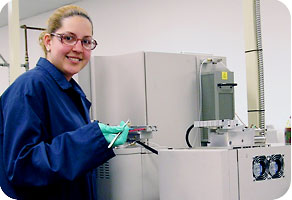Elemental and Micro-Elemental Testing
Columbia Analytical operates the only Micro-Elemental laboratory in the Southwest, providing high quality data and service to thousands of clients worldwide, since 1980. We contribute to research & development by providing analytical services to pharmaceutical, biotech, electronic, cosmetic, and manufacturing industries. Many well-known university and government research laboratories rely on our laboratory to generate high quality data in support of their research programs.

Elemental and Micro-Elemental Testing
- CHN Combustion / TC and IR detection
- Sulfur – Combustion / IR Detection
- Oxygen – Pyrolysis / IR Detection
- Halogens – Bomb and Oxygen Flask Combustion / Ion Chromatography
- Metals – ICP-OES, ICP-MS, and AAS
- Nitrogen Transfers – Dry Box
- LOD, LOI, and Dry Under Vacuum
Sample Questions & Answers
Q: For a molecule with the following formula, C10H5D5N2 (made up) does that count as 10 hydrogens (5H and 5D) or 15 hydrogens (5H and 2x5D)? How does your instrument determine the amount of H in the sample, by mass or by some other method?
A: The CHN analyses performed on your samples is based on the Dumas method. During the combustion of the sample in the presences of oxygen, carbon is converted to CO2, hydrogen to H2O, and Nitrogen to NOx then reduced to N. These gases are separated by a packed column and their intensity is measured by thermo-conductivity. The intensity is proportional to mass of the gases formed and is converted and reported on a percent by weight basis of C, H, and N.